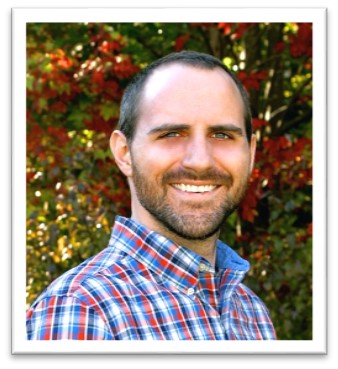COSAM News Articles 2020 May NSF CAREER Award Fuels Byron Farnum’s Quest to Find Storable Renewable Energy for Large-Scale Grids
NSF CAREER Award Fuels Byron Farnum’s Quest to Find Storable Renewable Energy for Large-Scale Grids
To power large-scale grids such as cities, renewable energy must be able to be converted and stored for future use.
Byron Farnum, an assistant professor in the Department of Chemistry and Biochemistry, received a $682,030 NSF CAREER award to further his research in the Farnum Group over the next five years to develop strategies for the storage of solar energy as electrical energy in redox-flow batteries. These batteries are being developed for grid-scale power storage and store energy in the form of reduced and oxidized small molecules. The structures and reactivity of the molecules can be tuned to improve battery performance.
Farnum is specifically researching how different reaction mechanisms store multiple electrons. “It is essential to store more than one electron,” Farnum explained. “By adding one more electron, the capacity for energy storage has been doubled. Then, building on this design, new molecules can be created with large amounts of energy that can help us create affordable renewable energy.” Using inorganic complexes comprised of nickel, which is a light-weight earth-abundant metal at a low price point, he is studying what factors control the storage of multiple electrons.
His work is broken down into three phases:
- Understanding the mechanisms by which nickel molecules store multiple electrons
- Enhancing reversibility and efficacy of multi-electron storage
- Applying these molecules in lab scale batteries
“Since the electrons are proportional to current, the more electrons the molecule stores, the more current these batteries will be able to generate,” he added.
Farnum’s research could be the key to the fluid nature of solar power. These batteries can be regulated to accept and deliver energy, so during periods of rain, the stored energy can power an entire grid.
“Flow batteries ramp up rather quickly,” Farnum shared. “By having the energy harvested, converted, and pumped into a chamber, the renewable energy can be stored in large quantities and used as needed by organizations, companies, or entire communities.”
As part of his outreach component for this NSF CAREER award, Farnum will participate in Auburn University Summer Science Institute where high school students have an opportunity to learn hands-on from professors.
“During SSI, students use solar garden lights as a model for the cycle of solar energy harvesting, conversion, and storage. Solar energy is harvest and converted by the built-in solar cell and energy is stored in copper-zinc batters constructed by the students,” Farnum said. “The students measure properties such as current and voltage to match the power output of the solar cell with the capacity of the battery.”
Farnum will demonstrate the functions of these batteries at Auburn’s annual Destination STEM event for students and will also collaborate with undergraduate students in research capacities.
Latest Headlines
-
07/09/2024
-
Summer Bridge Program celebrates 21 incoming Auburn students as they prepare for future STEM careers07/02/2024
-
07/02/2024
-
06/17/2024
-
06/07/2024

